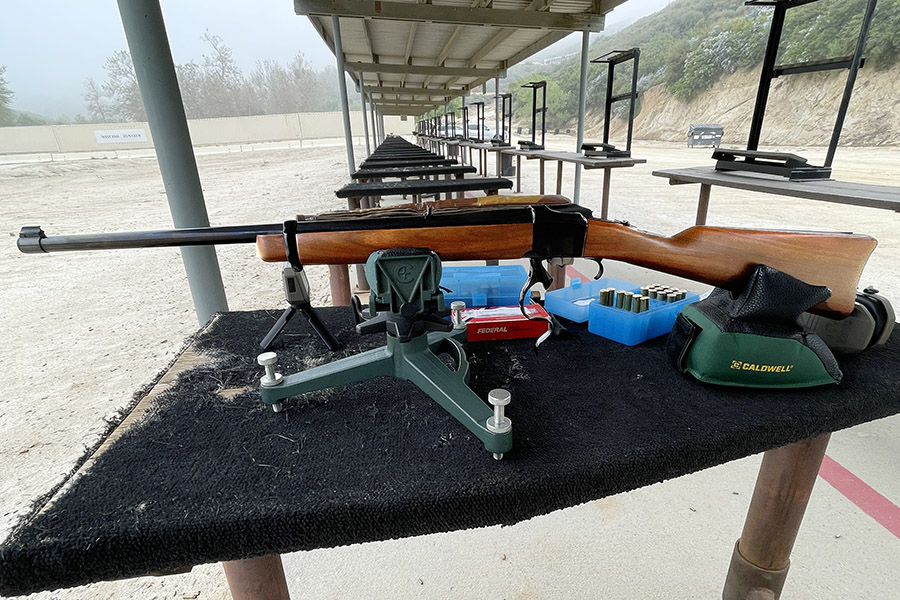By Joe Berk
We recently published a blog on my de-Bubba’d .45 70 Ruger No. 3. I wrapped that one up with the promise of a follow-up blog to tell you how the rifle shoots. This is that report. The bottom line up front? The .45 70 No. 3 is a cantankerous beast, but I found loads that it likes. What the No. 3 doesn’t like is the barrel band on the fore end. Leave it on and the rifle strings like a plumb bob. Take it off, and the No. 3’s capabilities emerge.
I shoot a fair amount of .45 70 in my Marlin Guide Gun, so I had my loads for it, some additi0nal recipes, and I even had a box of .45 70 factory ammo. Shooting factory ammo was unusual for me. Years ago, one of the guys at the range had a couple of boxes of factory ammo he wanted to unload for cheap, and I was happy to oblige Normally, the only factory stuff I shoot is .22 Long Rifle, but this ammo was cheaper than new unprimed brass, so I pounced.
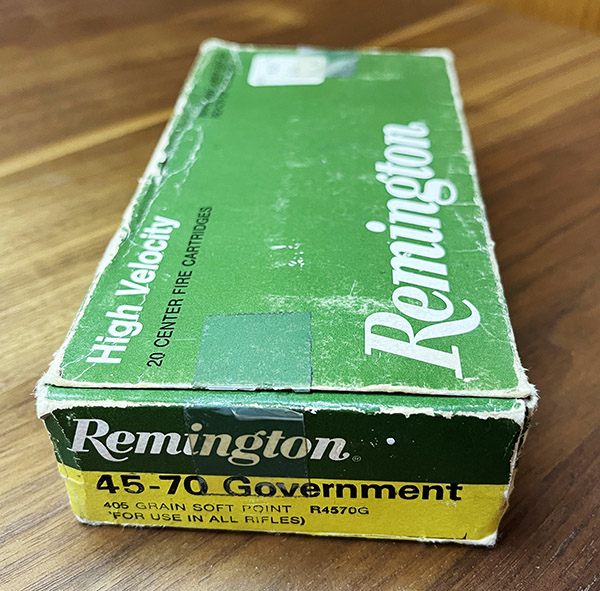
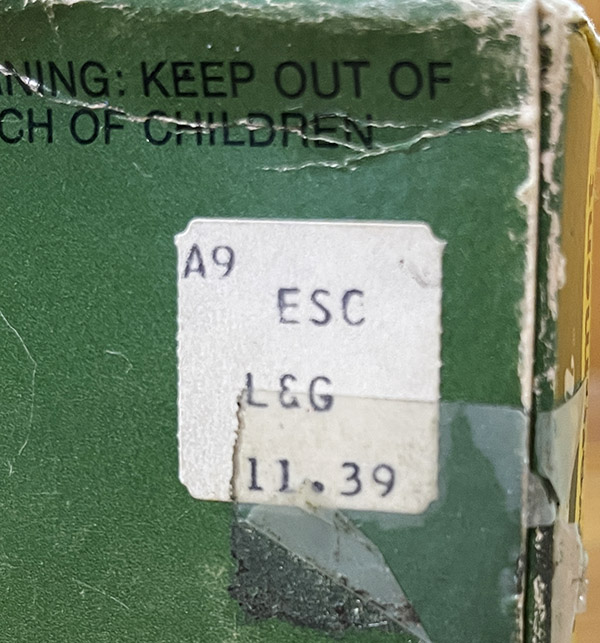
I had several loads I wanted to try:
-
- The above mentioned Remington 405-grain factory ammo.
- A load with the same 405-grain bullet the factory ammo used (I loaded with 42.0 grains and with 38.0 grains of IMR 3031 propellant).
- A load with the Hornady 300-grain jacketed hollowpoint bullet and 16.2 grains of Trail Boss.
- A load with the Hornady 300-grain jacketed hollowpoint bullet and 54.0 grains of XBR 8208 propellant (this is the accuracy load in my 26-inch barreled Ruger Circassian 45 70 No. 1).
- A load with the Hornady 350-grain jacketed softpoint bullet and 42.0 grains of IMR 3031.
- A load with the Missouri cast 405 grain bullet and 35.0 grains of IMR 4198 (this is my accuracy load in the Marlin Guide Gun).
I’ll warn you up front that not all of my accuracy testing is what I would call an apples-to-apples comparison. During the course of this testing, I found that the Ruger No. 3’s barrel band had a detrimental accuracy impact (after one or two shots, it induced extreme vertical stringing). I suppose I should do all of this testing again without the barrel band, and I probably will, but not in the near future. This testing was intended to be a quick look and point my loads in the right direction.

Also, I didn’t fire the same number of shots for each group, and I didn’t measure group size. Others might quibble with this. Measuring group size when shooting with iron sights is kind of silly. The smaller number of shots fired for some of the groups I tested will artificially reduce the extreme spreads and standard deviations. Hey, I’m writing a blog, not a doctoral dissertation.
With the above caveats out of the way, here are my results:

I thought I would share some of the targets with you, along with my comments.
This first target shows the results with the Remington 405 grain bullet and 42.0 grains of IMR 3031, and the Hornady 350-grain bullet and 42.0 grains of IMR 3031.

On the target above, I shot at the big bullseye in the center for the first bit of shooting (all at 50 yards with iron sights), then I shifted to the logo in the upper left corner. The rifle is shooting a little bit to the right. I tapped the rear sight a little to the left in its dovetail when I got home because I may take the No. 3 with me on an upcoming pig hunt and I’m a perfectionist. That said, I think the slight bias to the right won’t make any difference to the pig.
On this issue of vertical stringing: For the first two and sometimes three shots, the rifle shoots okay. The stringing would not be a problem in the field because I’m pretty sure the pig would either be DRT (dead right there) on the first shot, or if the shot was a miss, the pig would probably initiate aggressive evasive action. In either situation, the vertical stringing is moot.
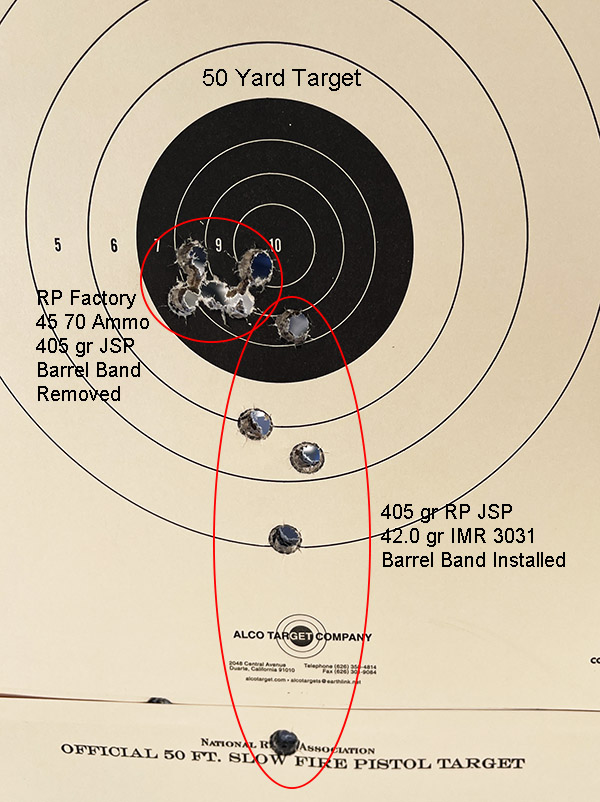
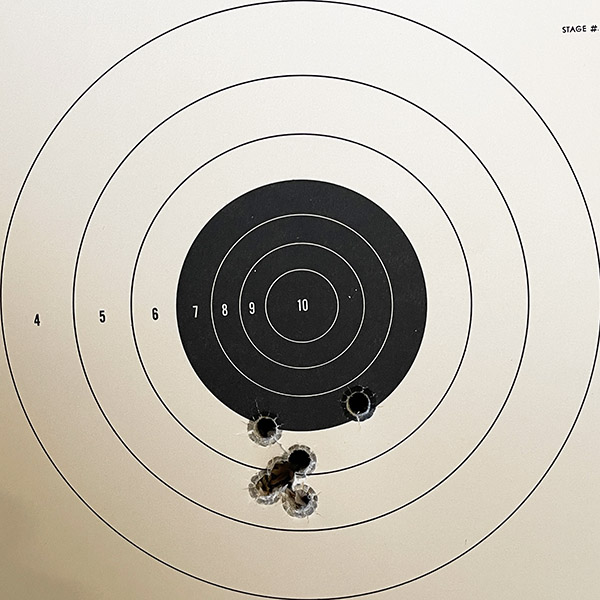
A few more points:
-
- Once again, the above testing shows there is not perfect correlation between low extreme spreads, low standard deviations, and accuracy. The cast bullet load with IMR 4198 (which is stellar in my Marlin Guide) had the lowest extreme spread and standard deviation I’ve ever recorded (granted, it was only for three shots), but it was not accurate at all. On the other hand, the Trail Boss load showed a similarly tiny extreme spread and standard deviation, and it was very accurate.
- Once again, the above testing confirmed that each rifle is an entity unto its own. The 300-grain Hornady jacketed hollowpoint with XBR 8208 (which performed extremely well in my 26-inch Circassian No. 1) returned unacceptable accuracy in the No. 3.
- These loads were in the trapdoor Springfield and modern lever gun range (which is to say, they were relatively mild .45 70 loads). The recoil was still attention-getting, but even with the Ruger No. 3’s metal buttplate, the recoil was tolerable.
- The rear sight that came with the No. 3 does not offer sufficient elevation adjustment for hotter loads. These all shot several inches lower than the lighter loads at 50 yards. I had the rear sight elevated as high as it would go just to get the rifle to print in the black bullseye with the factory ammo and the Trail Boss loads; with the warmer loads, I couldn’t raise the rear sight leaf any higher. I have a higher rear sight that came off my .458 Win Mag Ruger No. 1, and that sight will replace the one that is currently on the No. 3.
As mentioned above, I did most of my shooting for this series at 50 yards, as I regard the open sights and the No. 3 .45 70 as a 50-yard rifle. That notwithstanding, I tried my luck at 100 yards with a couple of loads. The first was the 405-grain Remington jacketed softpoint with 42.0 grains of IMR 3031. My results with my reloads were embarrassing; I only put one shot on paper. When I tried the Remington factory ammo with the same bullet, though, I was very pleasantly surprised. I put eight shots (the last of my factory ammo) into a 3 1/2-inch circle.
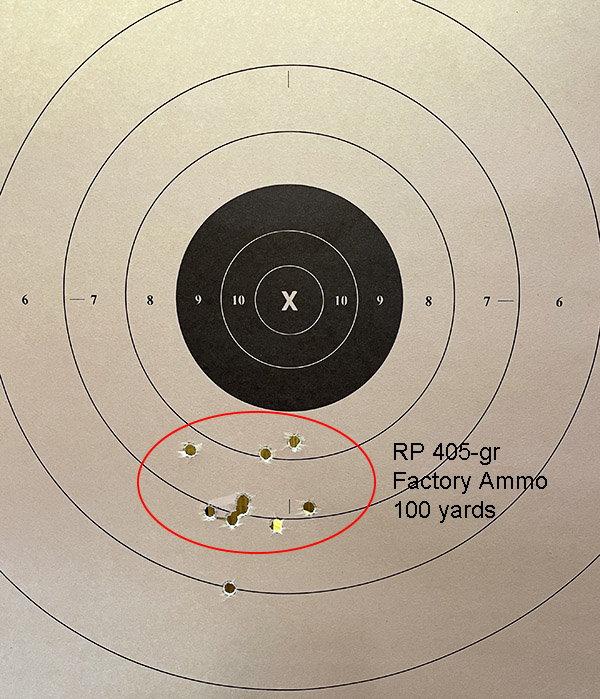
I like my .45 70 Ruger No. 3. It’s a kicker and it’s accurate.
Join our Facebook ExNotes page!
Never miss an ExNotes blog:

